As an avid guitarist and an enthusiast who has been swayed by the profound sounds of both Martin and Taylor guitars, I’ve been asked countless times the undying question: Martin or Taylor — which is better? It feels akin to choosing between a vintage wine and a gourmet cheese. Both brands hold their own allure, their unique flavors and tones, making it an intriguing puzzle for guitar enthusiasts.
It’s a guitar brands showdown: Martin vs Taylor, two titans battling it out in the world of high-end acoustic guitars. Their steadfast rivalry somewhat echoes the legendary feud of the Montagues vs Capulets from Shakespeare’s Romeo and Juliet. But unlike the star-crossed lovers, we can surely find our happy ending, right? I truly believe the answer lies in understanding their individual strengths, unique sounds, playability and most importantly, how each resonates with your own style and preference.
Our story began when my hands met the fond old strings of a Martin for the first time, its robust sound echoing beautifully in the air, signifying something more than just mere music; it was tradition. Martin, with its rich history and heritage, was introducing me to a world where guitars held more than just chords; they held stories.
But just as I thought I had found my match, in came the Taylor. Its unique tones and the ease of playability had me questioning my earlier choice. Now, every strum and pluck felt so effortlessly harmonious. Taylor resonated differently, matching my rhythm, welcoming a new perspective to music.
The puzzle deepened, and so did my intrigue. As someone who has spent countless hours dissecting the characteristics of these two iconic brands, let me share my insights in this comprehensive guide: Martin vs Taylor Guitars. On this journey, we will explore their strengths, weaknesses, unique sound, playability, and much more. While I can’t promise a definitive resolution to the Martin Vs Taylor debate, I can assure you a better understanding of where you might find your musical soulmate.
So, are you ready to uncover the enigmatic world of Martin and Taylor guitars? Let’s tune in.
Martins’ Strengths and Weaknesses
Rich History and Traditional Sound
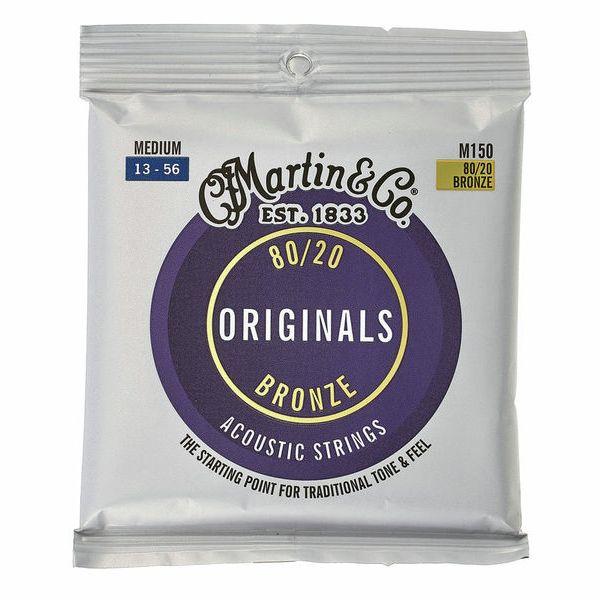
Transitioning from the broader view of Martins’ strengths and weaknesses, I’ve always admired the rich history and traditional sound that Martin guitars bring to the table. An element that underlines their robust appeal among guitar aficionados is their heritage, steeped in quality craftsmanship and timeless tonal clarity. Martin clearly respects and values their historic roots, and this is palpable in the iconic resonance of each strum. The sound is characteristically Martin, steeped in a familiarity that resonates with authenticity and legacy.
Martin classic tone is one attribute that sets these guitars apart. It’s this perfect blend of warm lower tones and bright treble notes that. when strummed, sound like a musical narration of eras gone by. I like to think of it as a modern rendition of the symphony, with the traditional guitar sound lending an elegant touch to every note. This fusion of the old and new sets the tone for a truly unique musical journey, a characteristic that’s often considered revered among Martin lovers.
The Martin sound is a combination of history, science, and craftsmanship. Adjusting the bracing, experimenting with different materials and shapes, and their refined production process – all contribute to the allure of that classic Martin sound. The sound quality is rich and textured, harmoniously blending depth and brightness. And unlike more contemporary designs, there’s a notable consistency in the audio output across various models and series. This consistency, in many ways, symbolizes their commitment to maintaining the Martin standard.
That said, it’s the balance between modern vs traditional guitar sound that makes Martin truly stand out. Keeping the prime elements of their historical tone intact while introducing innovative design modifications to meet the evolving needs of musicians, has been Martins’ masterstroke.
Martin guitars aren’t just instruments; they are musical history worn on a strap. This historic charm coupled with their unique tone gives musicians a captivating mix of sound, feel and aesthetic pleasure, contributing to the allure of the Martin brand. These factors make a significant contribution to Martins’ appeal and are consistent strengths in the face-off with other brands.
Moving on from Martins’ rich history and traditional sound, it’s crucial to provide an informed perspective on the considerations when choosing a Martin guitar. Let’s delve into that in the next section, offering insights into what musicians should factor in to make the right choose for them.
Considerations When Choosing Martin
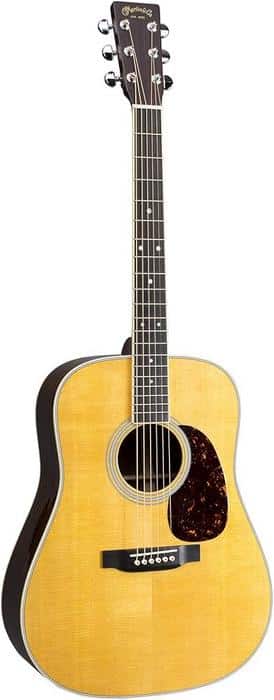
As an experienced guitarist, before we dive into the ocean of the ‘Taylor’ brand, let’s clarify some crucial aspects linked to Martin’s weaknesses. One thing that I often see catching beginners right off guard is guitar pricing. Coming from Martin, you can expect some heftier price tags, especially with their vintage and higher-end models. While I appreciate the craftsmanship, heritage, and sound these pieces offer, the unapologetic premium you pay may not be ideal for everyone. I always ask myself, and I urge you to do the same – am I making a savvy investment or just coveting prestige?
Another potential weakness is the consistency of Martin’s guitar models. Martin is well-known for its classic designs, but its commitment to tradition can also mean less innovation. This is something to bear in mind if you’re the type who constantly seeks new and exciting features in their instruments. Don’t get me wrong – sticking to the tried-and-true has its merits. However, limited variation could restrict your options if you desire to venture beyond the realm of conventional specifications or looks.
Furthermore, do take note of the fragility that comes with many Martin models, especially those built in the traditional style. These guitars need proper care and maintenance to keep them in optimal playing condition. They can be somewhat delicate, so durability may be a concern if you’re an active touring musician or tend to be rough with your gear. Their more robust models do sacrifice some of that quintessential Martin ‘warmth’ of tone, so consider your playing environment and take your lifestyle into account when choosing a model
Speaking of tone, while Martin guitars are celebrated for their rich, warm sounds, it may not cater to every guitarist’s preference. Emphasizing bass and mid frequencies, they are less suitable for musicians seeking a crispy sound with more shimmer in the highest frequency register. It’s a taste preference, making critical listening paramount in your selection process.
It’s essential to grasp these considerations, remembering that no guitar is perfect, and a thoughtful choice must encompass both strengths and weaknesses. The ‘Martin versus Taylor’ debate isn’t just about which brand is objectively better. It’s about understanding their distinct characters and considering which aligns best with your playing style, sonic preference, and budget.
And with that, let’s see what Taylor brings to the field…
Taylor’s Strengths and Weaknesses
Unique Sound and Playability

Moving on to one of Taylor’s distinctive strengths – unique sound and playability. As a seasoned guitarist, I’ve spent years honing my skills on various guitars, and I’ve always admired the Taylor sound quality. Taylor’s proprietary ES2 system, with its behind-the-saddle placement, produces exceptional amplified tone that is natural, dynamic, and intimate.
During my many performances and recording sessions, I have found that Taylor’s sound is distinctly modern and crisp, with emphasis on the midrange frequencies. It brings out the clear, bell-like harmonics that make finger-picking and lead guitar parts really stand out. The precise articulation helps each note stand proudly on its own, giving the sound a clear defining character, which is ideal for solos and melodic lines.
Another aspect that elevates my admiration for Taylor guitars is their impressive playability. From first-hand experience, playing a Taylor guitar is almost effortless. Their meticulous attention to craftsmanship and their innovative neck design have created an easy-to-play experience that allows guitarists to focus more on their music and less on struggling with string tension.
Taylor’s commitment to playability has revolutionized the industry standard and has set them apart from the competition. It’s a critical factor for beginners and seasoned players alike because easier playability encourages more practice, less fatigue, and ultimately, better performances.
In conclusion, my own experiences and encounters with Taylor guitars have led me to value their unique sound quality, largely provided by their pioneering ES2 pickup system, as well as their superb playability. However, it’s important to remember when choosing a guitar that personal preference should always take precedence. A Taylor might be perfect for me, but every musician has their own unique style and sonic preference that may resonate more closely with the traditional warmth of a Martin, or the clear, crisp tone of a Taylor.
Considerations When Choosing Taylor
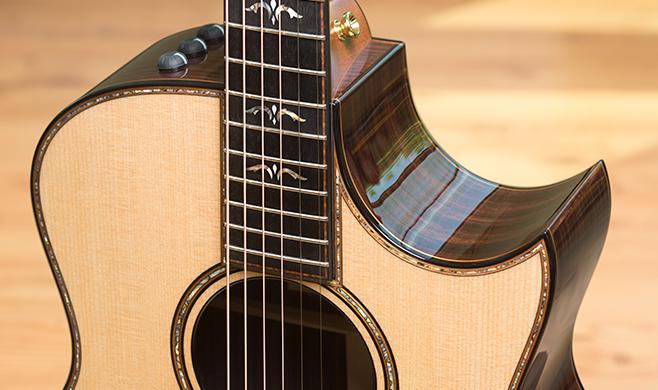
Delving deeper into Taylor’s nuances, one highlight of its SWOT manifestation lies in the realm of possible considerations for potential buyers. As I share my thought-process, bear in mind that my intention isn’t to undervalue Taylor’s contribution to the music world. It’s all about helping you make an informed decision.
One area for contemplation involves guitar pricing. Admittedly, Taylor’s pricing can be a deterrent for some. The company’s reputation as a top-tier brand is not without its justification, but this quality often comes with a higher price tag. This fact can be crucial for novices who aren’t eager to make a significant investment upfront or for musicians on a tight budget.
However, it’s essential to note that high cost does not automatically equal diminished value. It pays to remember that with a Taylor, you’re investing in excellent workmanship, innovative design, and stellar sound quality. The expenditure translates to enhanced playability and satisfaction, which, in my book, is priceless.
Moving on to the range of guitar models offered by Taylor, the variations can initially be overwhelming. While the vast selection caters to a diverse array of musical preferences and playing styles, it might pose a challenge for newbies. There’s this potential for overchoice, where having too many options hampers swift decision-making.
I’ve found that, for first-timers, scouring through Taylor’s series catalog may require significant research and time investment. Getting to understand the model numbering system to decipher the best fit can be daunting. However, I consider this a minor hump, considering the exceptional instrument that awaits you post-decision.
In essence, while Taylor’s higher prices and vast range of models may present initial red flags, it’s essential to view them in light of what they offer: superior quality and diverse choice. After all, acquiring a good guitar is an investment, not just a purchase.
Now that we’ve thoroughly dissected the fundamental pros and cons of Taylors, let’s delve deeper into the world of beginner guitars and answer a burning question: should a newbie go for a Martin or a Taylor? Trust me; this will be an engaging journey.
Guitars for Beginners: Martin or Taylor
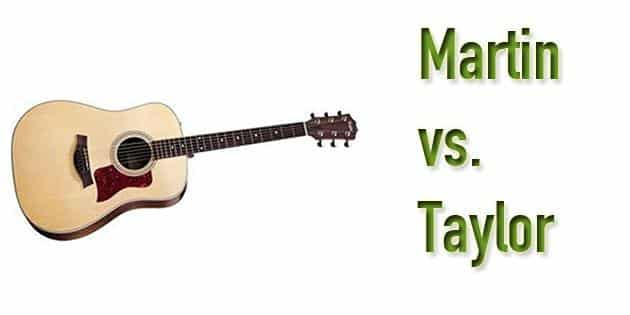
As someone who has strummed more strings than I care to admit, I’m here to shed some light on the Martin or Taylor dilemma that may be plaguing your mind lately. We’ve delved into the strengths and weaknesses of both Martin and Taylor, witnessed the rich history and unique sound they carry, enumerated the considerations you need to have in mind while choosing either. It’s time to cast the spotlight on the setting most relevant to our newbies – the world of entry-level guitars. Where would a beginner find their chord – Martin or Taylor?
Now, the question that’s been humming in the backdrop: Are you a budding guitarist mulling over your first guitar pick? Martin or Taylor – which way should you steer? Deciphering this may seem like learning to play the F sharp major chord all over again, but it’s not.
Let’s start by understanding the landscape. While both brands boast an impressive range, entry-level guitars are a separate field altogether. As a beginner, you’re in the early days of your journey – looking for a guitar that’s easy to handle, sounds decent and, importantly, doesn’t burn a massive hole in your pocket.
In my experience, I’ve found that Martin does an excellent job of catering to beginners. Their X-series and Road series guitars offer solid spruce tops, for instance, which give you a warm resonant sound typically found in more expensive models. What’s most appealing is that they manage to offer these perks while keeping the price tag quite affordable.
On the flip side, though, Martin’s entry-level guitars are not without their caveats. The lower-priced guitars often use HPL (High-Pressure Laminate) back and sides. HPL is a durable and affordable material, but it can’t quite achieve the tone and depth offered by genuine wooden body parts. As a newbie starting with an HPL-bodied Martin, you may later find that upgrading to a higher-quality Martin demands a slightly steeper learning curve, as the sound variation can be significant.
With Taylor, the main draw for beginners is the focus on playability. Taylors are known for their easy action and user-friendly neck profiles, making them a pleasure to play, especially for beginners. Moreover, their Academy series offers a gorgeous array of entry-level guitars that manage to maintain a high level of quality.
However, Taylors are typically more expensive than their Martin counterparts, even at the entry-level. While they make an excellent guitar for beginners, they might not be as light on the wallet. But remember, there is a reason behind that price tag; the ease of play, the bright sound, and the aesthetic appeal factor into it.
To best decide between a Martin or Taylor for a beginner, it’s pertinent to gauge your commitment level and budget. A Martin entry-level guitar may be more affordable and still produce a great sound, but you should be okay with potentially dealing with a transition when you later upgrade. If you’re willing to invest a bit more for smooth playability, and a vibrant tonal output, you might lead towards a Taylor.
Remember, your journey doesn’t end with picking your first guitar; it’s just getting started. Enjoy the process, embrace the ‘beginner’ tag, and play on. It’s your story; whether you write it with a Martin or Taylor, ensure you hit the right strings.
Ensuingly, we’ll explore paired comparisons, compare tonewoods and construction, investigate neck style and playability, all to aid you in this pivotal decision. Looking forward to it!
Exploring Paired Comparisons
Comparing Tonewoods and Construction
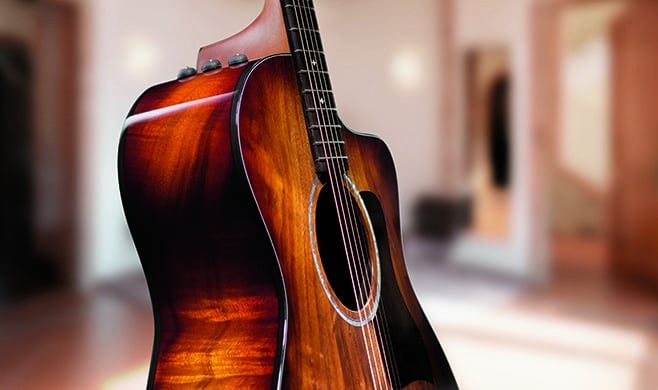
As we delve deeper into the opportune territory of guitar construction, my passion for this craft becomes crystal clear. Every nuance, from the choice of tonewoods to the particular style of bracing, deeply influences the tone, look, and feel of a guitar. Our exploration of Martin and Taylor guitars has allowed us to realize the value of such intricate construction details.
When discussing guitar woods and materials, one must understand that each type of wood manifests a unique resonance and tonality. Martin traditionally gravitates toward classic American tonewoods like mahogany and rosewood, producing guitars with rich, dark tones. On the flip side, Taylor often explores global tonewoods like African ovangkol and Australian blackwood, creating lighter, brighter sound profiles. This variance infuses diverse tonal aesthetics for players to choose based on preference, affording opportunity.
The conversation naturally steers towards the significant aspect of bracing. The rivalry between X-bracing vs V-bracing can be seen as a metaphor for the fundamental Martin versus Taylor debate. Martin historically equates with X-bracing, paving way for a bass-heavy sound. Entering this matrix in the mid-20th century, Taylor had a fresh perspective. They introduced V-bracing in 2018; a move that afforded more control over the guitar’s intonation and led to a brighter, punchier tone.
Not every guitarist will favor one over the other; in fact, the distinct tones these construction methodologies procure are equally valid, offering contrasting flavors of music. These insights highlight the instrumental role (pun intended) of construction in shaping the signature sound of these legendary guitar brands and elucidate why some guitarists may favor a Martin, while others, a Taylor.
Before we move on to the topics of neck style and playability, let’s remember the core lesson here. The essence of guitar construction lies not in the superiority of one style over another, but in the opportunity it presents for diversity. In the end, it all boils back down to personal preference. Whether you resonate more with the dark, mature tones of a Martin, or the bright, lively energy of a Taylor, there is a world of detailed craftsmanship behind that experience. We should appreciate the nuances of both, in their contribution to the sublime and universal language of music.
Neck Style and Playability Comparison
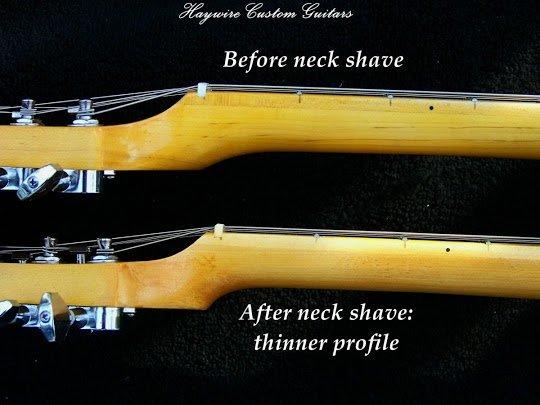
As we delve deeper into the complexity of comparing Martins and Taylors, it is worth taking a moment to ponder the significant role of guitar neck styles in shaping your playing experience. Much of a guitar’s appeal and persuasion lies within the intricacies of its neck style and the resultant influence on its playability.
From a player’s perspective, there’s a discernible difference when we focus on Martin and Taylor necks. Martin’s traditional ‘Dovetail’ design has a pronounced ‘V’ shape, heavily influenced by vintage designs. Sturdy and resistive, it indeed offers a unique grip, however, it can also be intimidating for novices or players with smaller hands.
On the opposite spectrum are Taylor’s slim, ‘Tropical Mahogany’ necks known for simplicity and precision of control. The modern, sleek design, with its low action, enhances playability – an aspect that significantly draws those in favor of pop, rock, or country genres. Their easy handling definitely brings with it a certain appeal.
In terms of durability, I’ve noticed that Martin’s heavier neck builds tend to hold up a bit better under tension and stress. Yet, Taylor’s bolt-on necks have a distinct advantage – if damaged, they can be easily replaced, which isn’t as straightforward with Martin’s glued-in style.
Fascinatingly, the guitar’s neck style influences the tonality as well. The dense mahogany of Taylor’s necks contributes to a brighter, more defined edge, while Martin’s wider-scale builds offer a deeper resonance and power. This shouldn’t overshadow the other factors at play; yet, understanding this intricate relationship is crucial to make a well-informed choice between Martin or Taylor.
In the context of potential threats to guitar ownership, it’s imperative to recognize that the stylish appeal or ease of playability may come with related concerns. Be ready for compromises and trade-offs. Take the time to understand which neck style optimally resonates with your musical aspirations, hand size, and grip comfort. It’s, after all, about finding your tool of expression that perfectly mirrors your musical identity.
As we forge ahead with more aspects of our exploration, remember that every contribution to playability and appeal – from tonewoods to neck styles-, isn’t standalone. Rather, it’s a symphony of elements harmonizing together to create the unique musical expanse that is distinct to either Martin or Taylor.
FAQs
What is the main difference between Martin and Taylor guitars?
Which type of guitars are better for beginners, Martin or Taylor?
How does the price vary between Martin and Taylor guitars?
Conclusion
Before diving into our core insights, let’s reignite our initial query: Who reigns in the battle of acoustics: Martin or Taylor? Reflecting on my journey with guitars, I must admit that choosing between these two giants isn’t easy. But through in-depth analysis and comparison, I can conclude that each has its unique appeal.
Martin vs Taylor isn’t about determining a clear winner but understanding each brand’s distinctive qualities and deciding which aligns best with your personal taste and playing style.
My guitar comparison journey unveiled revered qualities in both brands. Martin guitars, steeped in rich history and offering a traditional sound, evidently make an excellent choice for guitarists seeking a vintage and warm tonality. It’s not just about guitar aesthetics but about capturing a tone that has reverberated through years of music history.
On the other side, Taylor guitars shine in their own light. They offer a unique sound and playability that inspire and challenge the modern musician. If you favor ultra-playable necks, broader tonal palette, and crave for precise intonation, Taylor should be your pick.
The question of Martin or Taylor for beginners hinges on what you seek as a novice player. Do you want to immerse in the legacy of a classic tone or experiment with a more diversified spectrum of sounds? Your answer to this question will guide you in the right direction.
My paired comparisons and extensive exploration of tonewoods and construction methods clarified that the tonal variety results from concerted factors – not solely the brand. The neck style and playability also play a significant part, affecting the comfort and the overall experience of playing the guitar.
Distilling all these insights, the Martin vs Taylor guitar comparison ultimately depends on individual preferences. Both offer high-quality, reliable instruments that can last a lifetime if properly maintained. My personal experience taught me that the best guitar isn’t determined by popular opinion but by how well it resonates with your individual style and needs.
In conclusion, whether you lean towards the seasoned character of Martin or the innovative appeal of Taylor, you are choosing a piece of music history etched in every strum. So here’s to inspiring musical journeys and the beauty of choice in the pursuit of the perfect acoustic!